A dive light is an essential piece of your scuba diving kit whether you are a beginner or a more advanced technical diver. Picking the right light can take a little time and consideration. Anyone who knows Joey and me, is well aware that we have a hefty collection of dive lights for photography, videography and general use. Between the two of us, we have tried and tested a decent variety of lights and are always on the hunt for new brands that work well in a wide variety of dive settings.
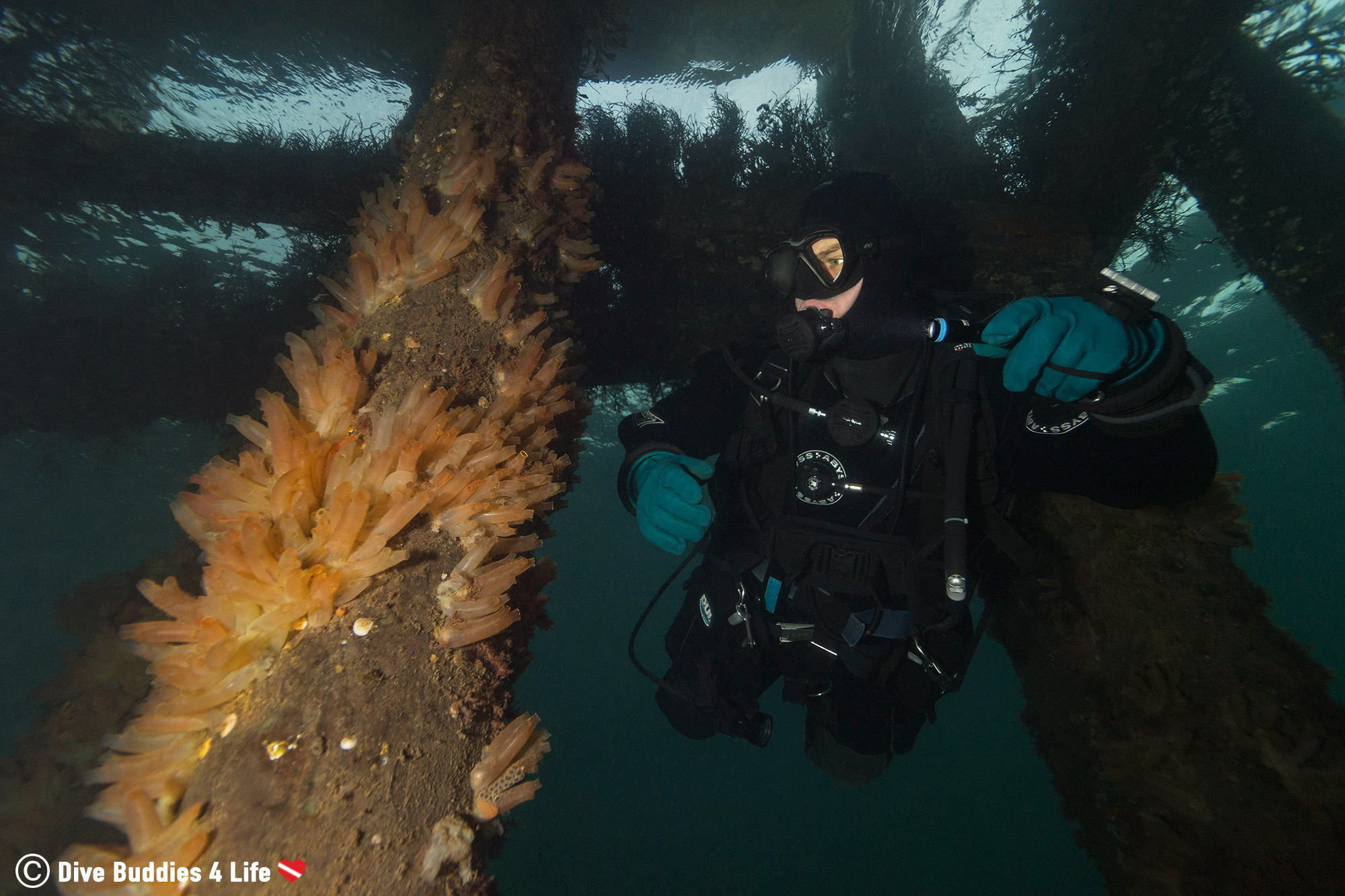
Characterizing a good dive light can be a tad tricky. The definition of a perfect dive light is often in the eye of the diver and can vary depending on the application of the light. That being said some of the most important features of a dive torch include light production, handling, weight in the water, run time and rechargeability.

Xtar is an electronic technology company from Shenzhen, China. Founded in 2006, the company integrates production, sales, research and development, into the fabrication and manufacture of high-quality Li-ion batteries, smart chargers and LED flashlights. Having a strong connection to various industries – diving and outdoor sports – being one, they asked us to test, photograph and review their newest recreational dive light; the D20B 1000.
D20B 1000 Light Specs
| Torch Size: | Head diameter 0.24 centimeters, body diameter 0.22 centimeters and length 10.6 centimeters |
| Weight: | 52 grams |
| Lighting: | Cree XP-L/V6 LED, colour temperature 7000K, Lumen: high 1000 lumen, medium 590 lumen, SOS 590 lumen |
| Beam: | 103-meter beam throw |
| Runtime: | On the highest setting the light runtime is 4 hours. At medium it lasts 7.33 hours. Times have been tested in 25°C water and could vary depending on environmental conditions. |
| Max Depth: | The light is pressure tested to 50 meters (164 feet) |
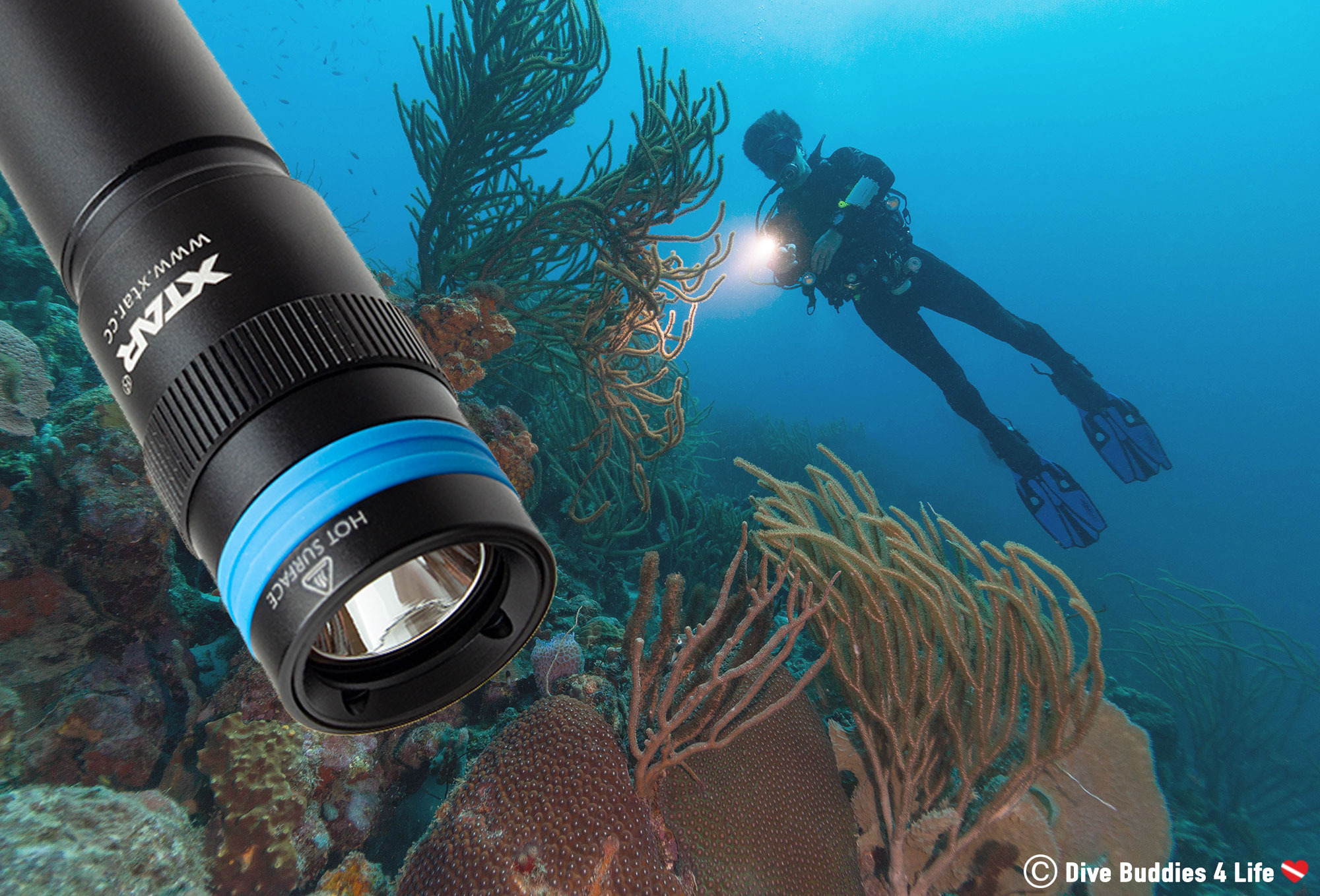
The D20B 1000 dive light was delivered to us in a quaint professionally designed box. The content of the box was really well presented and packaged. Xtar included the dive light, lanyard, user manual, charging accessories, Li-ion battery as well as spare o-rings. Without having traveled with the light, we were able to conclude that the small size of the box meant that the light would be excellent for traveling within its case.
Joey and I took the light on several dives to test out its functionality. In preparation for the dive, all we had to do was charge and install the battery.
On our first dive, we found that the small and compact nature of the light made for good storage. We definitely didn’t want to be holding the scuba light during the entire duration of our dive. Joey could easily tuck the light into his drysuit or BCD pocket and retrieve it when needed. In addition to its small size, the torch was also lightweight (52 grams) meaning it wasn’t cumbersome or heavy to hook on dive equipment.
Turning on the light was done by rotating the rotary switch (essentially a serrated ring) on the head portion of the dive torch. There were three settings that this rotary switch could be switched to (each one you can feel the light “latch” into place); high, medium and SOS. For obvious reasons, the high setting provided the most light. When compared to some of our other dive lights, we found the rotary switch on the D20B 1000 light robust and simple. Both are important qualities in a dive light when considering that a diver might turn their light on and off multiple times during a dive.

The illumination was bright and sufficient to use in low light situations as well as in the dark. We found the light not just bring but also with adequate penetration power – it really seemed to punch through the particulate and plankton in the water column. The beam was tight meaning there was not a lot of wasted light. On land, we compared the light to a non-diving law enforcement grade flashlight and found that the D20B 1000 was smaller, brighter and covered more distance than the police flashlight counterpart.
Another feature that we really appreciated was the duration of the battery. Joey and I had no trouble doing two dives with the flashlight before needing to recharge it. It’s nice not to need to conserve and worry about your equipment’s battery life on every single dive.
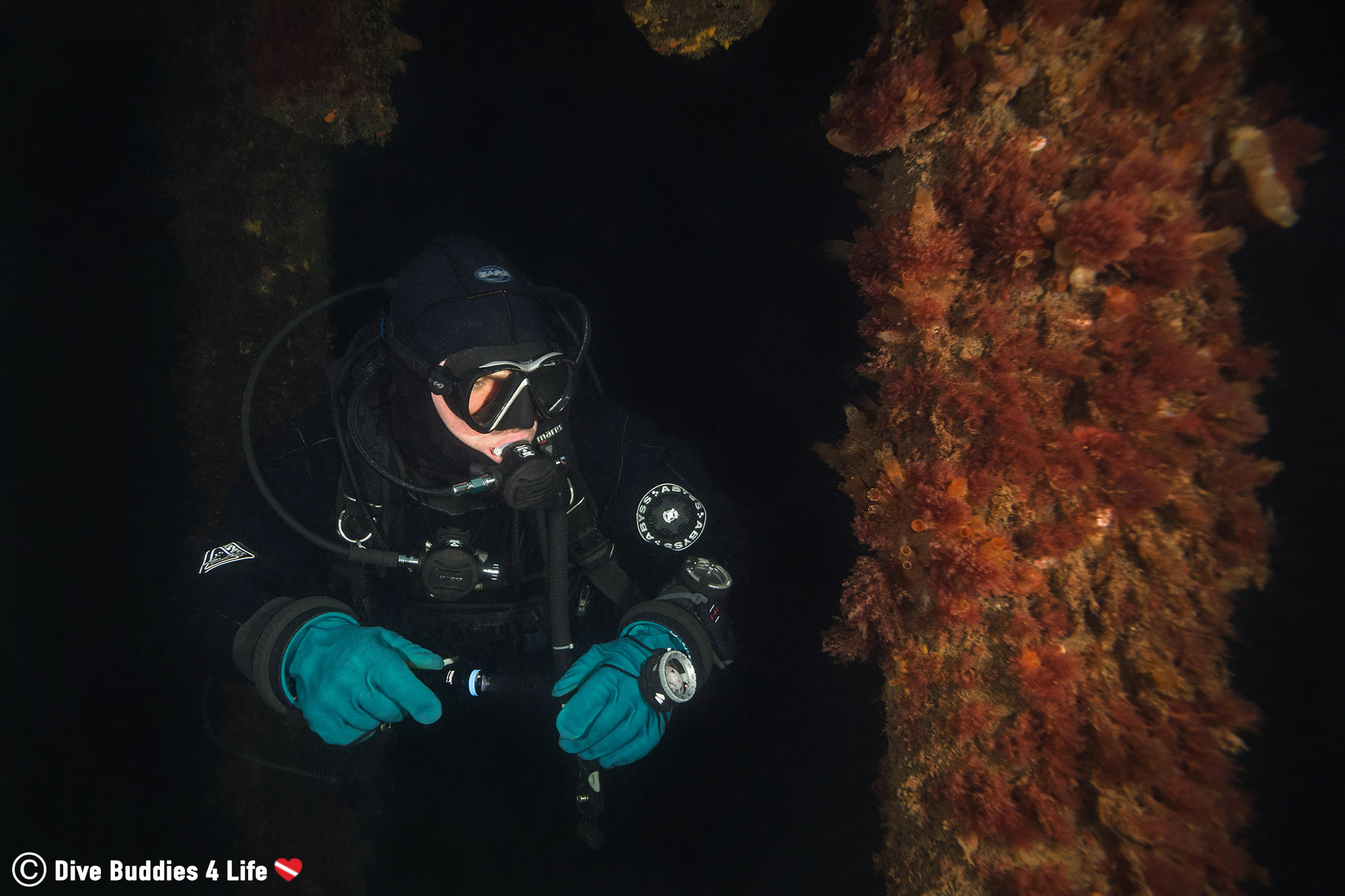
Although the dive light was easy to handle with a comfortable grip for use as a handheld light in cold water diving Joey found the light a little small. For certain applications, small compact lights are super beneficial as you don’t want to be transporting more equipment underwater than necessary. But for cold water diving in Canada, having three layers of gloves made it tricky at times to handle and use the light. I think had we been in a location that afforded us the opportunity to have less thermal bulk or no gloves at all we would not have had this issue.
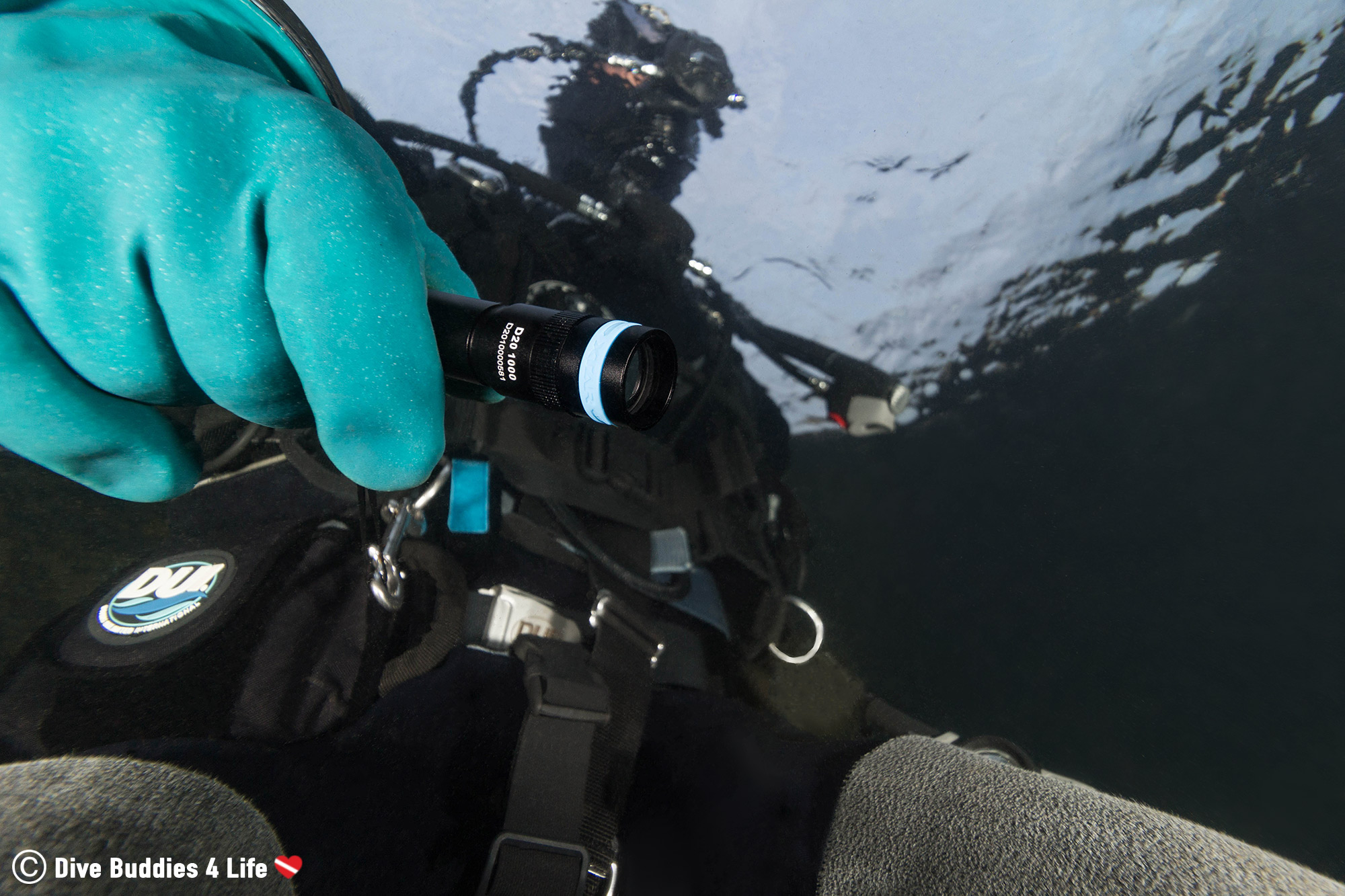
Overall, we absolutely love the size and simplicity of this torch and the illumination it provides underwater. After testing the light on repeated dives we found that the D20B 1000 was a quality construction. We haven’t had any issues with the light thus far and that’s important to note as we can sometimes be hard on equipment.
I was pleasantly surprised at the strength of the beam for such a small light. Joey and I both agree that the compact Xtar D20B 1000 light is a great beginner/intermediate light. We also agree that the light is a fantastic focus light to add to your underwater photography kit. It was a pleasure to have an additional lightweight light that fits well onto our camera setups as opposed to a bulkier cumbersome strobe.
Would I buy this light? The simple answer is yes. I found it a great fit not only as a photographer but also just for poking around under rocks. As a dive light, the Xtar D20B 1000 light is in the low price range. The online pricing is roughly $60 USD and when compared to the quality of the light, we found it well worth the price. As always, Joey and I look forward to continuing to try out new and innovative brands of lights.
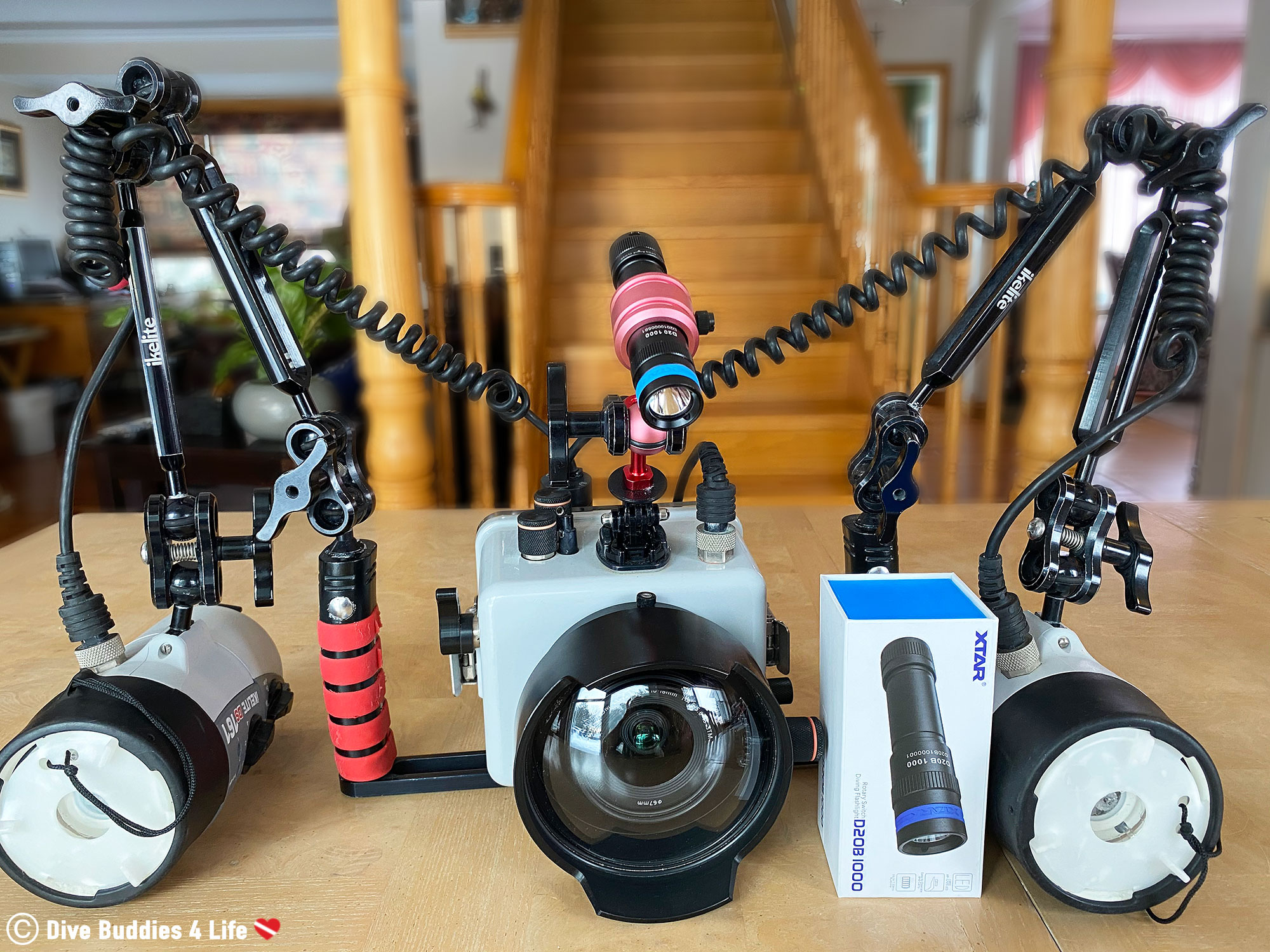
Do you have your own dive light? If so what is your preferred brand and style of dive light?
Writers Note: This dive light review was sponsored by Xtar. The D20B 1000 light was provided to Dive Buddies 4 Life by the company in exchange for the review. All comments, tests and thoughts in relation to the light are honest and strictly that of Dive Buddies 4 Life. For more information on the light or to get your own light to visit the Xtar website.
Additionally, this post may contain affiliate links. We will make a small commission if you make a purchase through one of these links, at no extra cost to you. See full disclosure and disclaimer policy here.

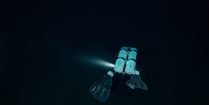
The day is over and the sun is setting on a day of scuba diving but is it really time to hang up your fins, or do you dare slip back into the water at night?

Dive equipment may be expensive, but new divers will find, there are many advantages to having your own set of scuba gear.
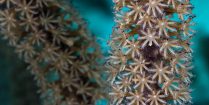
Not all things underwater can be seen at first glance - for some, you need to take a closer look. Macro photography is the art of close-up photography on small subjects.

Reviewing the Secret of Rosalita Flats by author Tim W. Jackson who integrates scuba diving into the narrative of his most recent Caribbean mystery novel.
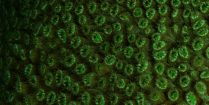
Fluodiving, fluorescent night diving, UV diving, glow diving - goes by many names. But no matter what you call this vibrant type of diving, the optical magic of fluorescence adds a totally new dimension to your night diving repertoire.
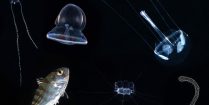
Blackwater diving is a type of night diving where scuba divers immerse themselves over deep channels of offshore water to witness the largest migration on the planet - the diurnal migration.

Help fight single-use plastics and their effects on our planet with this Canadian made eco-friendly glass straw.

Sometimes all you need is a dash of colour and a splash of water! Spark your child’s creative spirit as they colour their way through the underwater world with the first official Dive Buddies 4 Life colouring book.
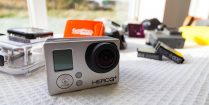
Problem: you want to take decent underwater pictures but good photography gear is just so expensive. Solution: learn how to take good underwater pictures with your handy dandy GoPro, it's easier than you think.
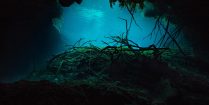
For some Tulum is a region of ancient civilization and crumbling ruins. For others, it’s one of the best cave and cenote diving places in the world.

Awesome Maps creates illustrated maps inspiring travel and wanderlust. Their world dive map is a comprehensive art piece showcasing over 500 different dive spots with snippets of information about the type of dive and underwater attributes.
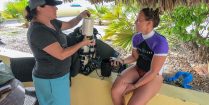
Bonaire TEK is an annual October occurrence, where Buddy Dive Resort partners with leaders in the tech diving industry for a week of technical dive demonstrations, equipment trials, presentations, training ins and outs, and camaraderie.
